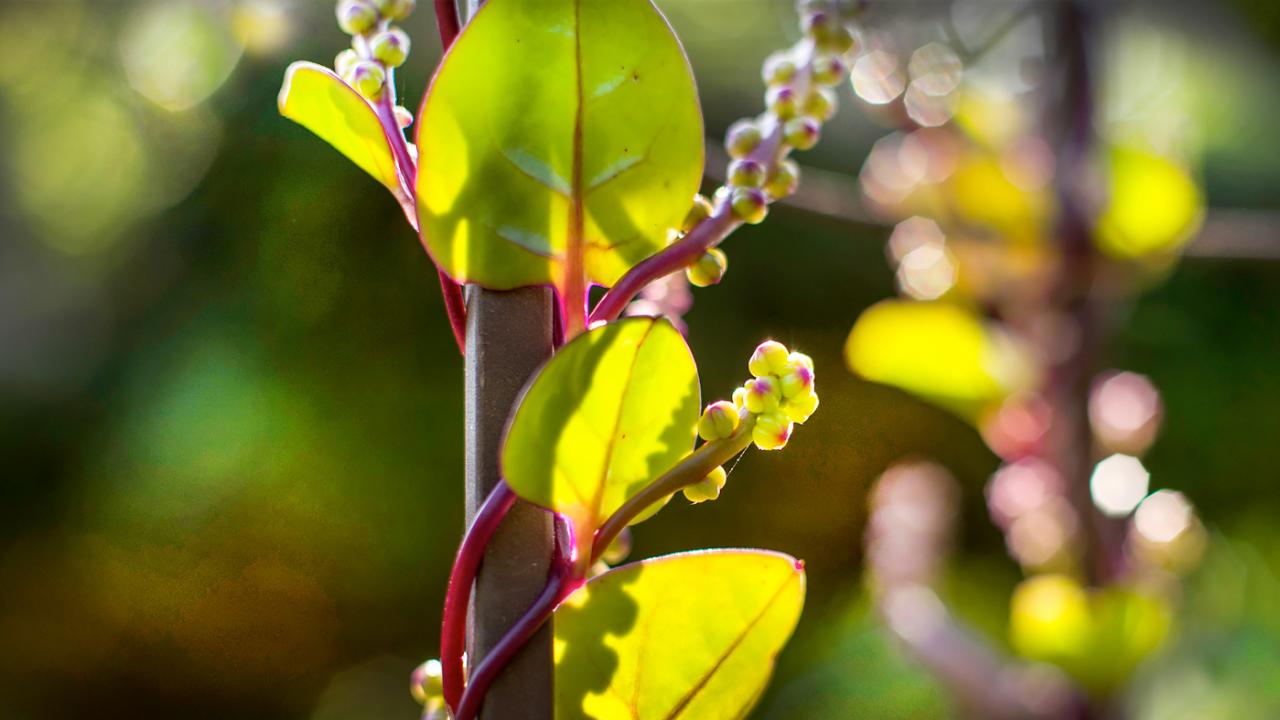

Plants & Gardening
Garden Stories
Bonsai pots hold more than plants
When looking at different bonsai trees, you might notice the stylized beauty of their shapes and textures. A lot of thought and work are put into raising bonsai trees and pruning them just so, but for many bonsai artists, their containers are just as important as the plant itself.
“The pot and the soil have a relationship just as much as the tree and the pot have a relationship. The tree-to-pot relationship is aesthetic and functional too,” said Chris Baker, curator of bonsai at the Chicago Botanic Garden.
For all gardeners, proper drainage, size, and a suitable material are important considerations. In the art of bonsai, the relationship between tree and container is equally important. It’s all about the discipline of pairing, according to Baker.
All images and quotations below, courtesy of Chris Baker.
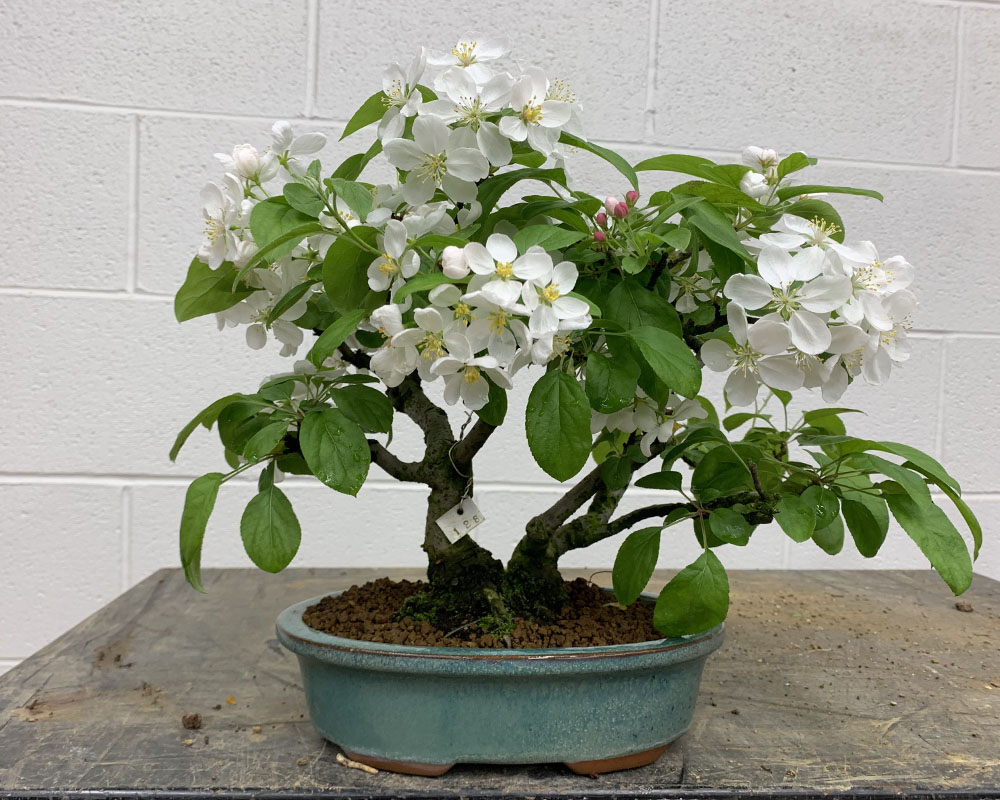
A crabapple tree in the Garden’s bonsai collection. “This is a deciduous tree so it has a glazed pot. The color works well with the white and pink blooms.”
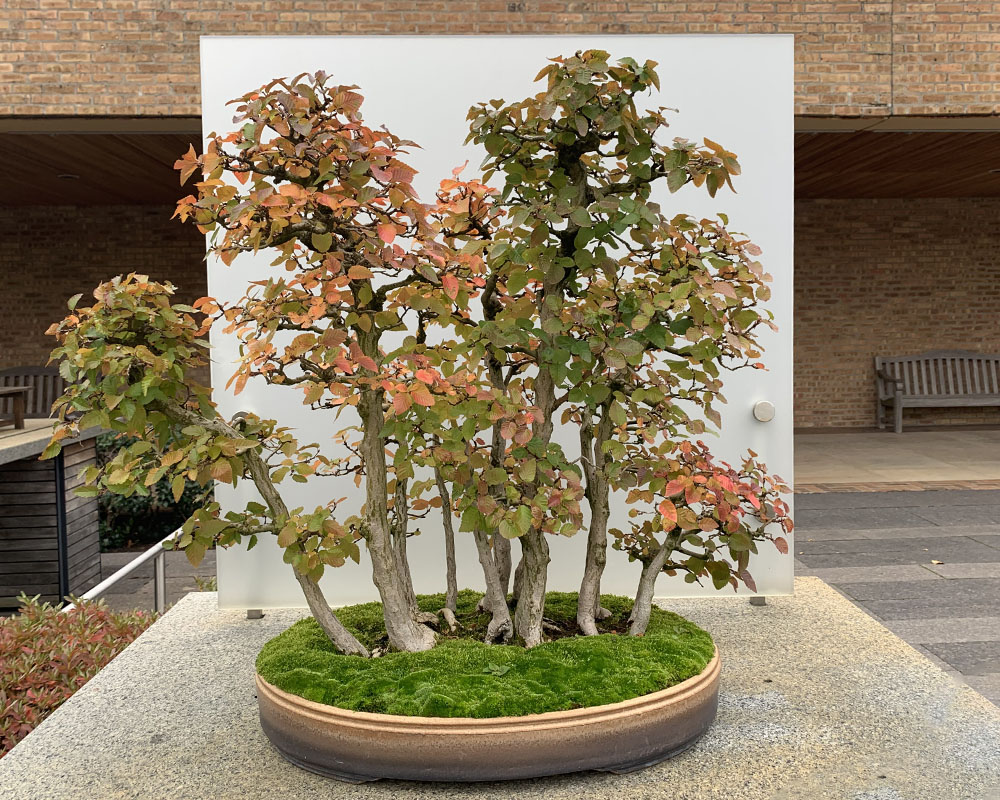
A hornbeam tree in the Garden’s bonsai collection. The pot was made by Eli Akins of Waldo Street Pottery. “Though this is a deciduous tree, this does not have a shiny glaze. Instead, the colors are more muted and allow the fall color to stand out. It also is very complementary with bark color in the winter when the leaves have fallen.”
.jpg)
A juniper raft in the Garden’s bonsai collection. “This long and shallow pot accentuates the nature of the tree. Junipers prefer a well-draining soil, so this shallow container is not a problem for it, though more frequent watering is needed to care for the tree.”
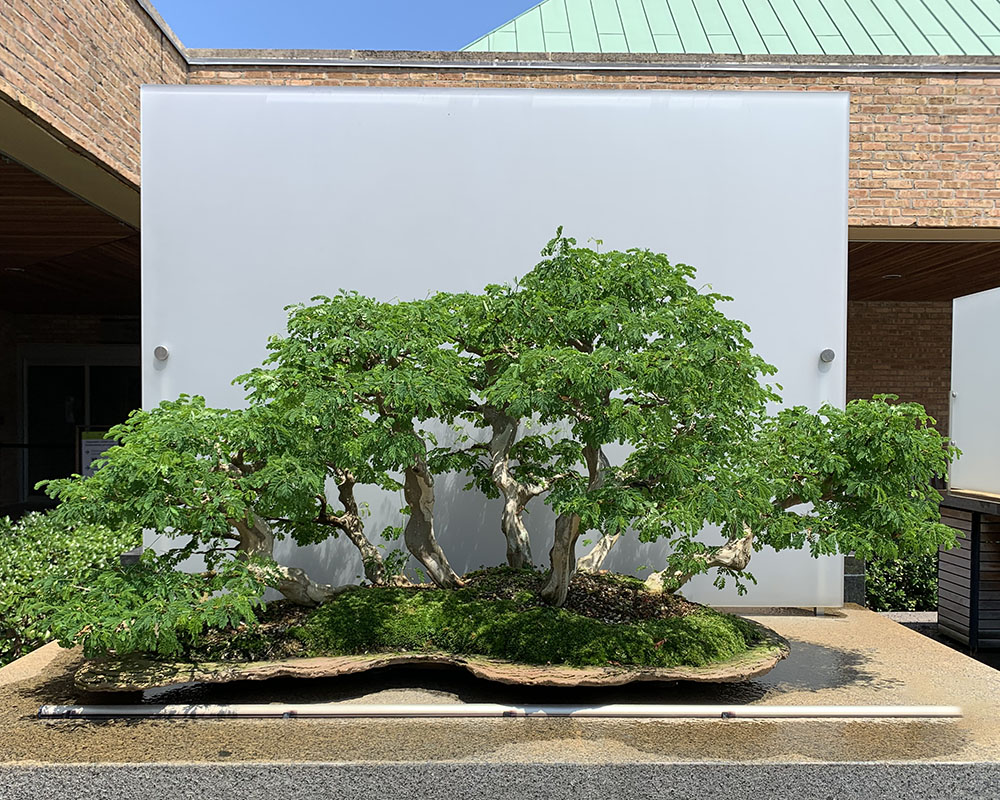
A raintree slab in the Garden’s bonsai collection. This features a fabricated slab.
.jpg)
An evergreen in the Garden’s bonsai collection. “This tree is paired with a glazed container that was made by artist Paul Katich, the tree's owner.”
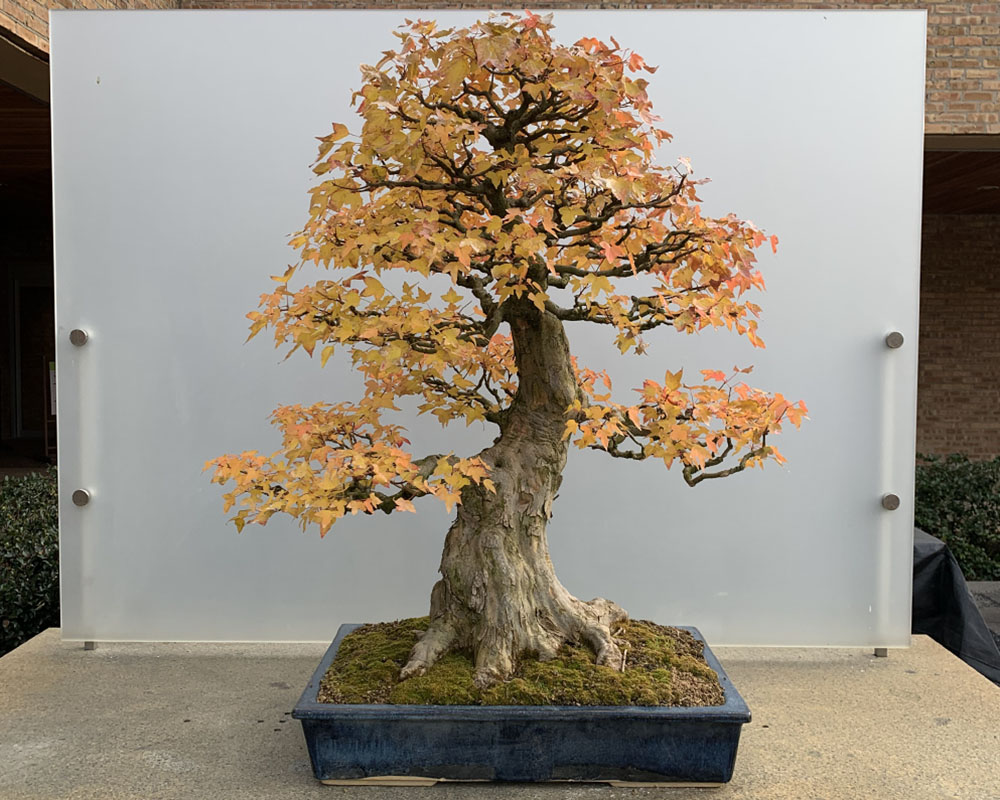
A maple tree in the Garden’s bonsai collection. “This is a very large and powerful tree. You can see the rectangle pot has straight edges and short, sturdy feet to carry the look of the tree. The blue glaze works well with the fall color.”
.jpg)
A pine slab in the Garden’s bonsai collection. “This pine is on a slab to better tell the story on a mountain top. You can see the tree is potted on the opposite side of its direction. This gives balance to the composition, which would not be true had it been planted in the middle of the left side.”
.jpg)
A juniper in the Garden’s bonsai collection. “This is a very unique tree with a lot going on in the trunk movement. The round container allows your eye to follow the tree trunk without the container getting in the way as a rectangle might. ”
In bonsai terms, trees come in feminine and masculine forms and pots do too. In some cases, the bonsai isn’t contained by a pot at all, but by a slab or a rock planting.
The key is to make a harmonious pairing, but it isn’t a perfect science. It’s more of an art. “The purpose of the pot is to enhance the look and make the tree look its best or to tell the story right, so the artist is telling a story about a tree,” Baker said.
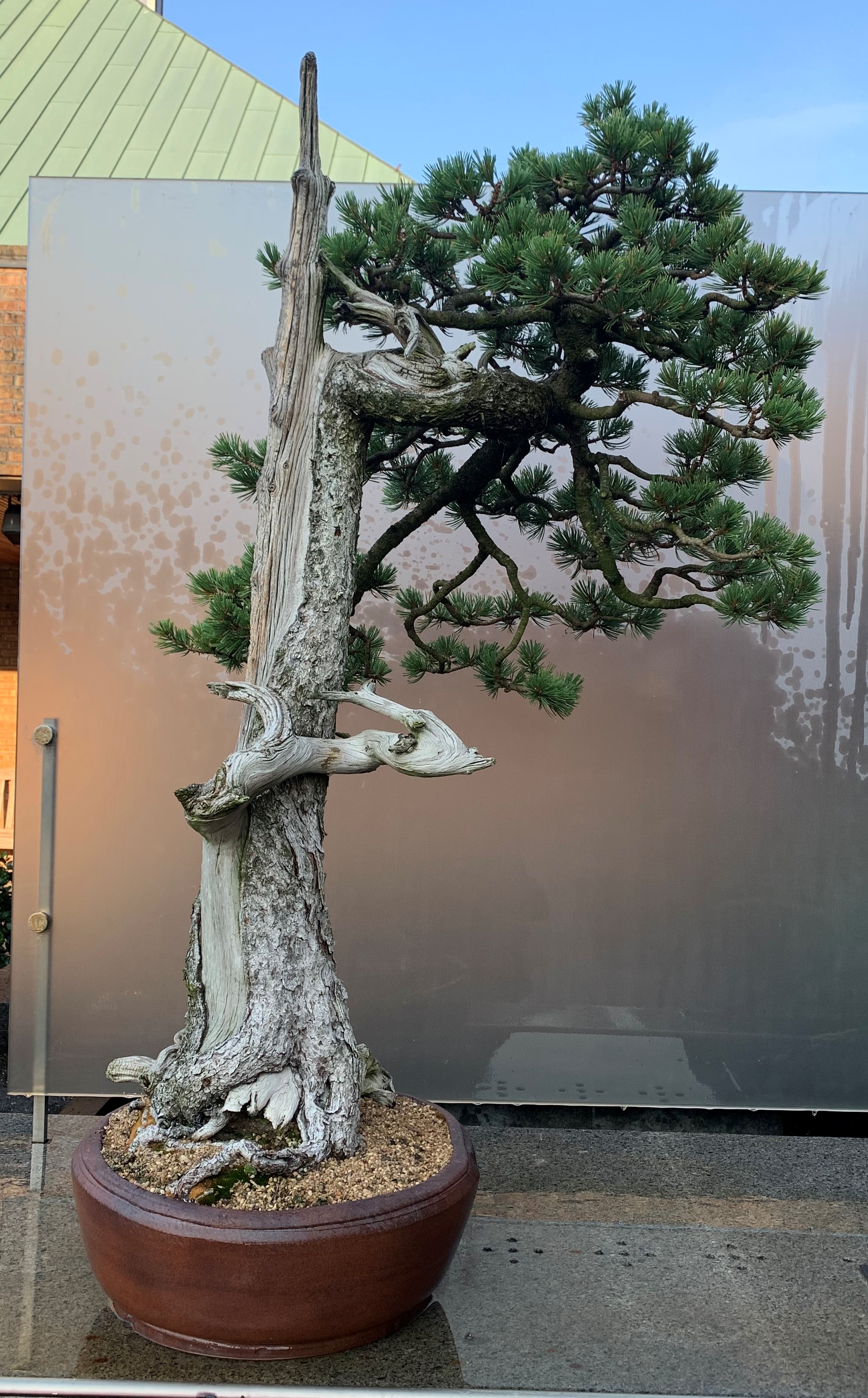
A limber pine in the Garden’s bonsai collection. The tree is between 600 and 1,000 years old. The container, although fairly new, has a rough, aged appearance. The container’s color represents the environment where the tree was originally collected.
Part of that story is where the bonsai originated. Sometimes, bonsai artists use a container and style that replicates the land or terrain where the bonsai came from. Finding a pot that has similar textures and tones of the environment it was pulled from is one example.
“We’re pulling all kinds of cues and an aesthetic value from nature and trying to incorporate it into the container we’re keeping these trees in,” Baker said. “We have a number of trees that are in containers that have reds, yellows, or some earthy tones that might represent the rocky cliff where the tree comes from.”
Composition is a strong feature of the bonsai art and can dictate what types of containers are used. Sometimes bonsai artists use long, narrow containers, placing the tree on one side as the branches extend over to the other side to replicate the stretch of land. “The length and the extension of that container gives you that visual. Maybe you add a small rock there, and another small plant there that gives you this idea that there’s this expansion of land,” he said.
Consideration of color is also a critical part of the process. Artists choose whether they want contrasting colors or more of a complementary pairing. “You might have a teal-ish blue pot and pair it with a maple—something with lots of reds, orange, and yellows for contrast,” Baker said. Unglazed brown pots with more earthy tones are often paired with evergreens and junipers, offering a more symbiotic look.
Then there’s age, both of the tree and the pot. “You certainly wouldn't take a 300-year-old pine with cracked bark and throw it in a shiny, glazed container that you just got off of a production line,” he said. “So having an aged pot that has patina on it and age adds to the story of the tree.”
It's about finding the right home for each tree, and that pairing process is something Baker looks forward to in late winter and early spring. “It gives us an opportunity to change a tree’s entire look by changing the container or using a stone to plant on,” he said. “This really gets the creative juices flowing and gets us ready for the season ahead.”

